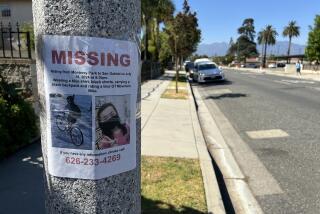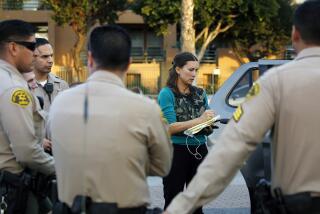More Pathways to Coast Sought for the Public : Ocean: State commission urges that $500,000 in permit fees be used to open new accessways offered by landowners.
With four out of five potential coastal accessways not yet open to the public, the California Coastal Commission unanimously agreed Tuesday to seek legislation that could generate $500,000 a year to open new paths to the state’s 1,100-mile coastline.
The commission’s 11-0 decision came in response to a Times report in September that only 19% of offers to dedicate narrow strips of land for public access along the state’s coastline had been accepted by public agencies.
The remaining 81% of the offers will expire--most in the next 10 years--and the potential access they would provide will be lost unless public agencies or nonprofit groups step forward and agree to accept responsibility for them.
Commission Executive Director Peter Douglas called the vote a “strong reaffirmation” of the commission’s commitment to public access.
Nowhere is the number of potential accessways greater than in Los Angeles County, which has the biggest population, the most development and the greatest demands for beach access along the California coast.
More than 370 of the 1,012 unaccepted offers to dedicate strips of land to the beach, along the shoreline or for trails in coastal mountains are in Los Angeles County. Most are in Malibu, where long stretches of the beachfront along Pacific Coast Highway are walled off from the public by homes and commercial development.
Intense opposition from some Malibu residents has prevented the opening of secluded beachfront areas to the public. That was evident again Tuesday as the commission heard from an Escondido Beach property owner opposed to having $75,000 spent to open and maintain two accessways, particularly one on his land.
By a 6-4 vote at Tuesday’s meeting near Los Angeles International Airport, the commissioners agreed to transfer $75,000 from a Malibu access fund to an arm of the Santa Monica Mountains Conservancy, which has agreed to open the accessways on the Malibu shoreline.
To ensure that the opportunities for accessways are not lost across the state, the commission called on the Legislature to pass two bills next year that would allow about $500,000 a year in coastal development permit fees to be used for grants to speed up the slow process of getting potential accessways in the hands of public agencies or nonprofit groups. The money now goes directly to the state’s general fund and is not designated for coastal purposes.
In addition, the commission will ask legislators to give greater immunity from lawsuits to public agencies and nonprofit groups that agree to open and maintain the accessways.
“It is very important that this commission continue to be on record in favor of maximizing public access to the coast,” said Commission Chairman Carl Williams. “The coast has no meaning unless we have that access.”
From the late 1970s through much of the 1980s, the commission required property owners seeking to develop coastal land to dedicate a portion of their property alongside a home or building or along the beachfront for public access.
Many local governments along the coast have declined to accept the access points and then open them to the public because of fears that doing so would expose them to legal liability if someone were injured.
“Without legal and financial help, they simply won’t be accepted,” said Coastal Commissioner Gary Giacomini. “That is not in doubt.”
Giacomini, a Marin County supervisor, said in an interview that the $500,000 a year is not enough to prevent all of the offers to dedicate from expiring and that additional funds must be found.
Commissioner Nancy Flemming said the panel’s legislative proposal is well-intentioned but has “huge holes in it.” Cities and counties will not participate without funding to operate and maintain the accessways, she said.
University of San Diego law student Peter MacLaggan urged commissioners to move aggressively to ensure that the prospective accessways are not lost. “The demand for coastal access is going to continue to grow,” he said.
However, MacLaggan said the opportunity to create coastal access is diminishing because beachfront development is restricting the amount of vacant property along the coast. He told commissioners “the inventory of offers to dedicate that you hold is an extremely valuable resource.”
Douglas said the commission has “taken steps to make sure no [offers to dedicate] will expire.” He said the state Coastal Conservancy and the State Lands Commission have agreed to accept the potential accessways to prevent them from being lost. The organizations say they do not have the money to open all the accessways but can help preserve them.
In a letter to the commission, Michael Fischer, executive officer of the Coastal Conservancy, said: “The principal reason that many [offers to dedicate] are languishing is the absence of money to construct, operate and maintain the easements.”
Linda Locklin, the commission’s coastal access manager, said media attention after The Times report prompted inquiries from local governments and nonprofit groups across the state, including Southern California.
She told the commission that Santa Barbara County is seeking an $84,000 grant to develop a program for accepting potential coastal accessways. Laguna Beach and San Diego officials also have expressed interest in securing additional accessways in their communities.
Locklin said “time is critical” because most of the offers to dedicate potential accessways will expire between 2001 and 2008 unless they are accepted by public agencies or nonprofit groups.
More to Read
Sign up for Essential California
The most important California stories and recommendations in your inbox every morning.
You may occasionally receive promotional content from the Los Angeles Times.






